Peter MALONE
An Invitation. Annual Gathering of Lay Chevalier Family
An Invitation. Annual Gathering of Lay Chevalier Family

Spirituality of the Heart,
Laudato Si
and
Uluru Statement from the Heart
“TIME TO SEE, TIME TO CHOOSE, TIME TO ACT”
An opportunity to explore the challenge of Laudato Si and Uluru Statement from the Heart through the lens of Spirituality of the Heart
There will be time for personal reflection and time for sharing
There may be the possibility of participating in some of the sessions by zoom meeting
September 16 to 18, 2022

St Mary’s Towers, Douglas Park
We have been unable to meet face to face for couple of years so
put this important event in your diary
Further details later. Fred Stubenrauch
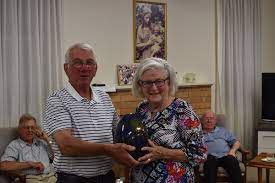
Fred and Sue Stubenrauch
This week: NAIDOC Week/ National Aborigines and Islanders Day Observance Committee, Catholic Plenary Council Meeting.
This week: NAIDOC Week/ National Aborigines and Islanders Day Observance Committee, Catholic Plenary Council Meeting.

In the spirit of the Uluru Statement of the Heart and of a Synodal Australian Church.

"Two apparently disparate events in coming days: the Catholic Plenary Council and NAIDOC Week. The weeks are moments in the life of communities that are in for the long haul. The larger challenges that they face will endure long after the week is over...
If NAIDOC and of the Australian Catholic Church are to achieve their goals time and patience will be required. Yet both weeks show signs of justifiable impatience. This year the theme of NAIDOC Week is Get Up! Stand Up! Show Up! Its tone is urgent, expressing frustration at the resistance to change but also the recognition that new possibilities have opened. Last year the theme was Heal Country, which echoed both a broader demand in Australia for respect for the natural environment and specific outrage at the destruction of the Juukan Caves. Impatience is understandable...
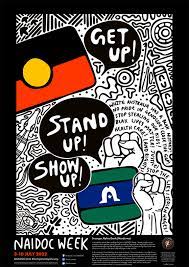
A sense of marginalisation leads easily to discouragement and dissipation of energy. That must be met by preserving and nourishing culture. Both Indigenous and Catholic communities face this challenge...
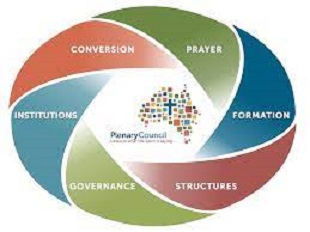
The building of the relationships involved in tradition and the culture built around it is a long-term project of the kind to which NAIDOC and the Catholic Church have long been committed. Dedicated weeks and Councils are important in gathering support for and furthering that project. But their effectiveness will lie in the energy they generate within people to hang in for the long haul."
Acknowledging the reflections of Andrew Hamilton SJ, Eureka Street.
Lair
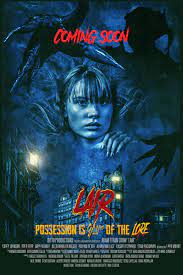
LAIR
UK, 2021, 96 minutes, Colour.
Corey Johnson, Alexandra Gilbreath, Aislinn De'Ath, Alana Wallace, Anya, Oded Fehr, Sean Buchanan.
Directed by Adam Ethan Crow.
Lair has won a considerable number of awards at specialist film festivals. It has strong fans. It also has a number of non-fans who are not persuaded by the dialogue or the characterisations. This review tends to the latter.
The setting is London, the audience seeing a man killing his wife and child, arrested, gone to trial, his claiming that he was influenced by a supernatural power. He had been working with an American colleague, played by Corey Johnson (quite an unsympathetic screen presence and character, rather alienating for the audience). His friend decides to film a test with some alleged supernatural objects in a flat to prove his friend’s claims. He also invites an expert ally from the United States to collaborate. He also invites a family to occupy a unit in an unoccupied building site. The mother has been recently divorced, is in partnership with a friend, has two daughters.
On the one hand, there is a drama of watching the family, installed cameras, the filming, which is creepy in itself. On the other hand, there are disputes within the family, going on outings in the street and accosted by their landlord, wanting his alleged devil doll back from the little girl and offering a teddy bear which has a camera in it. There is also the emotional tugging between the two women. And the teenage daughter invites some friends over to her mother’s anger – which leads to violence and death.
Are all these aspects hallucinations? Or are they the effect of a diabolical supernatural presence?
The police investigate, the friend has his own violent difficulties, the family is disrupted.
And, there is a final unexpected twist, focusing on the imprisoned man’s lawyer and the claims about supernatural objects – and her auctioning them for the highest bidder.
For some and interesting horror film. For others, a curiosity.
Styx
STYX
Germany, 2021, 97 minutes, Colour.
Susanne Wolff, Gedeon Oduor Wekesa.
Directed by Wolfgang Fischer.
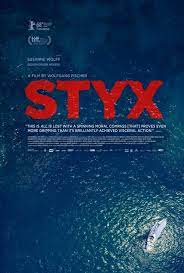 Initially, the audience is introduced to a German doctor in Cologne, tending the victim of a car accident. But, there are also images of monkeys, apes, intimations of Gibraltar, but also intimations of a special tropical sanctuary on the island of Asuncion, created by Charles Darwin.
Initially, the audience is introduced to a German doctor in Cologne, tending the victim of a car accident. But, there are also images of monkeys, apes, intimations of Gibraltar, but also intimations of a special tropical sanctuary on the island of Asuncion, created by Charles Darwin.
The doctor is a sailor and she set out from Gibraltar down the African coast. The first 40 minutes or so of the film show her on board, her skills, chores, swimming…
But, off the coast of Mauritania, she sees a refugee boat, crowded, people diving off, drowning. Which means the rest of the film is a moral dilemma for the doctor: what can she do, what should she do? She makes contact with a passing ship which says it cannot help. She makes contact with the Coast Guard who advises her not to intervene because it is too dangerous. Some critics have noted that this is the opposite of the white rescuer kind of film – this time she is fairly helpless.
There is some drama when she rescues a young African boy from the water, tension, revives him. He is desperate in his plea, also desperate in tossing the bottles of water over board for the passengers, upset and pushing the doctor into the water.
Which means then that the audience is asked to share the anguish of the refugees on the boat, embodied in the young boy, as well as the anguish of the doctor, finally dramatised when the Coast Guard arrives, rescues the drowned bodies, tries to interrogate the doctor who is in a catatonic state.
The Styx is for the dead, having to pay their way across or unable to enter the other realm.
- A sailing story? The doctor, the accident in Cologne, her going to Gibraltar, setting sail, her enjoying sailing, her destination, Asuncion, with Charles Darwin Park and nature?
- A refugee story, off the coast of Mauritania, the refugees presented as anonymous from Africa, the boat, difficulties, stranded, the people jumping, drowning, the young boy, the rescue by the doctor, her contact with ships, with the Coast Guard?
- The title, the River Styx in Greek mythology, the river of the dead, to the other world, and those crossing required to pay, otherwise prevented from going to the other world?
- The atmosphere of the accident, the work of the doctor?
- The images of the monkeys, the association with Gibraltar, with Asuncion?
- The doctor enjoying the sailing, the first 40 minutes of the film, activities?
- The boat, the refugees, the doctor’s signalling, the warning from the passing ship, it refusing to help, the radio contact unwilling to lose his job? The contact with the coastguards? Her being warned not to be involved, too much danger?
- The core of the film, the audience identifying with the doctor, standing by, wanting to help, the affluent German doctor able to intervene, unable to intervene? Sense of helplessness, compassion? Her rescuing the boy, tending to him, his pushing her overboard? His reactions, plea, tossing the water bottles into the water?
- The radio contact, the urgency, her being warned against acting?
- The consequences, the Coast Guard arriving, saving the number of the dead, the interview with the doctor, her catatonic state, the effect of the experience?
Minions. The Rise of Gru
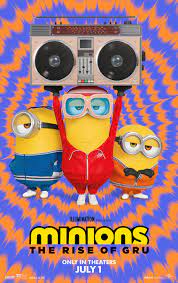
MINIONS, THE RISE OF GRU
US, 2022, 89 minutes, Colour.
Voices of: Steve Carell, Pierre Coffin, Taraji P.Hanson, Jean-Claude van Damme, Michelle Yeoh, Dolph Lundgren, Lucy Lawless, Danny Trejo, Alan Arkin, Julie Andrews, Russell Brand, RZA.
Directed by Kyle Balda.
Everybody seems to love the minions! And for young audiences, the Minions seem to have been around always. In fact, this is the fifth screen appearance. Audiences have warmed over the years to these yellow creatures, one eyed, two eyed, and their muffled words and sounds in communication (Pierre Coffin has been voicing them right from the start.) Even though they get entangled with that arch would-be criminal, Gru, they still seem to be likeable, even lovable.
But, at times, they are overwhelmed by the presence of Gru. And while they appear first in the title, this really is a film about Gru himself. We already know a lot about him, even about his interactions with his mother (voiced over the years by, of all people, Julie Andrews). He has wanted to be an arch-criminal and has been involved in many a crime, earning his nickname (introducing this word to many younger audiences who would not normally be using it), Despicable.
If the characters of the Marvel Universe can have origin stories, then why not an origin story for Gru? He is at school, some moments of deceptive charm, but that is all a cover, and he has no hesitation in declaring that when he grows up he wants to be a great criminal. And opportunities come his way, even at this young age.
It would seem that the master criminals in the world of the Minions and Gru, are The Vicious 6. Younger audiences like extraordinary and colourful villains – and the adult audience might enjoy these: all with funny names, like Belle Bottom (Taraji P.Hanson), with action stars Dolph Lundgren (Svengeance) and Jean-Claude van Damme (nicely called Jean-Clawed), always rough movie villain, Danny Trejo (stronghold) and, of all characters, a vicious nun, appropriately named Nun-chuk (television warrior, Lucy Lawless). And they are led by the elderly Wild Knuckles, a welcome voice with Alan Arkin.
Steve Carell has been voicing Gru for 10 years – master of the funny voices, and extending his range to the for the schoolboy-aged Gru.
The young audience will enjoy the visuals of these characters, their criminal behaviour, Belle Bottom masterminding a revolution against Wild Knuckles. The adult audiences will enjoy the zany goings-on. Gru idolises Wild Knuckles and joins with him after he has been ousted from the Vicious 6, so plenty of activities and action. While Knuckles might be getting old and being one-upped by the other Vicious 5, but he is always shrewd, setting himself up as an icon for Gru.
And, always there, the Minions, even going for martial arts lessons from Master Chow, voiced by veteran Michelle Yeoh).
So, it looks as though there is something for everyone. But, it is also pretty hectic, lots of colour, lots of noise, lots of action, non-stop really. Hectic.
Certainly no nodding off by any of the youngsters, no time for being bored!
Woodcutter Story, The
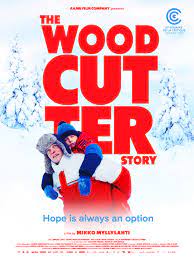
THE WOODCUTTER STORY
Finland, 2022, 99 minutes, Colour.
|
Jarkko Lahti, Iivo Tuuri, Hannu-Pekka Bjorman |
Is there a place for existentialist absurdism in cinema? In watching this film from Finland, set in a remote sawmill town, amidst the forest snowlcad trees, a range of ordinary characters who live rather mundane lives but are prone to utter deeper questions about the meaning of life and existence, there are reminders of the Coen brothers, especially Fargo. But, the director who comes to mind as we watch, if we have seen the films of the Swedish director, Roy Andersson, we realise that he was quite a pioneer in Existentialist Absurdism. And, with the Finland connection, there are memories of Ari Kaurismaki (and one commentator threw in Bunuel as well as Twin Peaks!).
Which means that an audience for The Woodcutter Story has either to be prepared for the absurdism or accept it as it unfolds before our eyes and ears.
There is an enigma right from the start, a businessman, suit and tie, climbing the snow to a high hut and forcing a woman to sign a contract of sale, presumably the sawmill. There is even more enigma at the end as the hero of the film, the rather uncomplicated Everyman, Pepe, also climbs to the hut and finds, symbolically, at home and life is where the heart is.
In the meantime, we get to know Pepe, simple, kind, a glass-half-full type, dressed in a red ski suit with muffler, surprisingly skimpy hair when he takes it off! He has a big burly friend at the mine, Tuomas, is devoted to his young son, is upset when his mother, disturbed by a wild beast, dies in hospital, and discovers when Tuomas is upset when he learns that his wife is carrying on with the barber, Pepe discovers that the barber is carrying on with all the women in the town!
So far, so deadpan in laconic dialogue, in posed pictures of the townsmen, and the camera focusing so often on facial reactions to characters and events. But, an axe murder, and the shift from deadpan to dead.
So, what follows is a great number of absurdist episodes – strikingly, for example, father and son wandering the snowclad Street outside closed shops but finding a barber’s shop, going in and finding the most up-to-date salon you could imagine, empty, but managed by a young girl who slips the little boy’s hair and, with a knife, approaches the lathered in the, and lose it at that! Except that the little boy becomes infatuated with the girl which leads him into all kinds of trouble.
It is not only Pepe who asks questions about the meaning of life, but a tall bearded man who seems to be obsessed with it, wanting to have a meeting to discuss life only to be told that it is a card night! And then there is a psychic singer who comes to the town, forces Pepe to surface his memories, which the psychic mimics. When crowds gather and the psychic sings, the most benevolent song, we imagine that perhaps there is a religious solution for the meaning of life. But, no – he is exposed as self-absorbed, a discredit to evangelists.
It means that if an audience cannot accept this kind of realism/deadpan surrealism narrative (and most won’t?), then they will be bewildered/annoyed. But, for those who can accept and be drawn into this often bizzare world, absurdism raises the questions and makes us wonder whether there are answers.
Man from Toronto, The

THE MAN FROM TORONTO
US, 2022, 112 minutes, Colour.
Kevin Hart, Woody Harrelson, Ellen Barkin, Jasmine Matthews, Kaley Cuoco, Pierson Fode.
Directed by Patrick Hughes.
Not sure why Toronto! As it turns out, the handler of a range of hitmen, American and International, controls a Man from Miami, Man from Tokyo… Anyway, it turns out that Woody Harrelson is the Man from Toronto.
And, while it is Woody Harrelson’s film, is very much a film for Kevin Hart. He does the same comic role over and over again but audiences enjoy it. He has the skill of being both irritating and ingratiating at the same time. Needless to say, they make quite the Odd Couple!
We see Kevin Hart as Teddy, a would-be gymnast, with all kinds of creative ideas (including boxing without hitting an opponent), advertising on social media but everything collapsing every time. He is married to Lori (Jasmine Matthews) and is planning on treating her to something special for her birthday. Instead, he gets the sack. We see Woody Harrelson, all in black, black hat, bald head, driving a sleek car, arriving for an interrogation, thugs eager to see his performance because they have heard so much about him, the victim terrified, the Man from Toronto able to extract information just by menacing threats.
How could these two possibly come together! By mistake, course. The Man from Toronto gets an urgent call to come to Virginia. In the meantime, Teddy drives to the house which he has rented for the birthday celebration. Wrong house. Another victim, admiring thugs, a checking photo taken of Teddy arriving with his box of goods and picking up a knife. He must be the Man from Toronto. But then the FBI raided the house.
Since Teddy is known to some criminals as the Man, the FBI filling him in on the background of the real Man and deciding that he has to impersonate the Man in order to draw the criminals, especially with the threat of a bomb exploding in the Venezuelan Embassy in Washington DC. Enter the real Man, who decides that using Teddy as an alternate is a good idea, especially when they suddenly fly to Puerto Rico, have a new job, Teddy with an earpiece getting advice from the Man, with Teddy-Kevin Hart obviously enjoying the impersonation and, despite mishaps, relishing the situation – and succeeding.
Enter the Man from Miami, threats, the cutting off of a thumb necessary for the bombing! And some acrobatic hijinks in a vast building in Puerto Rico.
We know that it will all turn out well, Teddy turning up for the birthday dinner, accompanied by the Man, who is infatuated by Lori’s friend (Kaley Cuoco) who urges him to dance – but, then they have to escape, face the Handler (her face previously not seen but the voice that of Ellen Barkin!), face the Latin American powers who are wanting to explode the bomb…
Some postscripts, the Man and the truth about him (more about Mr Nice Guy), but Teddy still in trouble because he was the cause the destruction of the Man’s special car – friendship but expectations of repayment.
Directed by Australian Patrick Hughes, Red Hill, Expendables, Hitman’s Wife Bodyguard.
- An odd couple comedy-drama? Domestic relationships and careers? Hitmen and commissions? And the two tangling?
- The variety of American cities, and visits to Toronto, to Utah, to the west, to Virginia, to Miami and to Puerto Rico? Atmosphere and flavour? Musical score?
- Teddy’s story? Kevin Hart’s screen presence, comedy, cheeky, incessant talking, comedy routines? Advertising for his gym experiments, failures? Boxing without touching? His being fired? His marriage to Lori? Her birthday, the plans? Renting the house? Driving there, the mistaken address? The criminals, the police and FBI raid?
- The FBI plan, for him to become the Man from Toronto, his fears, dithering, getting all the information about the background?
- The man from Toronto, the visit to Utah, dressed in black, the criminals, the interrogation, the sense of menace, bluff and the capitulation? The admiration by the other criminals? The phone calls from the Handler? The next job, travelling to Virginia? Arriving late?
- Teddy, with his equipment, the photo with the knife, acceptance that he was the Man from Toronto? The mixup and the ambiguity, trying to save the man being questioned? The admiration by the gangsters? Fitting into the character?
- The Handler, not being seen, the commissions, the revelation that she had a man from all different towns and countries? Her greed and the money? The man never having seen her, Teddy and his detecting that she was bluffing, doublecrossing?
- Teddy, the FBI agents, the tracking device? The phone calls to his wife, her being reassured, the handsome agent helping her with the beauty parlour, dancing…? Teddy anxious?
- The man from Toronto taking over, the pursuit of the truck, Teddy and the man and the commission, going to Puerto Rico? The tension on the plane, the mayhem, pulling the lever, flying out, getting back, the various deaths? The crash landing?
- The plot, the bomb, the Venezuelan President, the Embassy in Washington, the target? The previous man interrogated giving the code? The board room, the four men and the interrogation as to who was Greene? Teddy with the earpiece, the advice from The Man, clumsiness, Teddy making good, the knife, the fears, the admission of the truth? The issue of his thumbprint? Getting the thumb?
- The Handler, getting the man from Miami, suave, the pursuits, the fights, getting to Puerto Rico, the confrontation, the farcical aspects of Teddy, the vast space, falling, the thumb?
- The dinner in Washington, Lori very happy, her friend present as well? The Man coming, saying he was awkward with women, the meal, and encouraging him to dance, his change of heart? Teddy seeing the man from Miami, the pursuit, the fights?
- The visit to the plotters, the plans, the Handler and the man from Miami, Teddy saying the Man from Toronto was his driver, trying to persuade the Latin Americans that the Handler was false?
- The melodrama, the fights, the Handler pursuing them into the factory, her death?
- The Man from Toronto, the story of his growing up, his grandfather, the bear, yet the revelation of his soft heart in Minnesota, the deals with the Handler, Debora as his special car, never killing anyone, able to bluff with a sense of menace?
- Getting Teddy to the railway station for Lori, and the train destroying the car?
- A year later, the restaurant, the Man running the restaurant, relationship with Anna? But still the threats about the destroyed car, Teddy paying up? His success at the gym – but the continued threat?
- Entertaining odd couple, action, comedy, mayhem?
Compartment No. 6
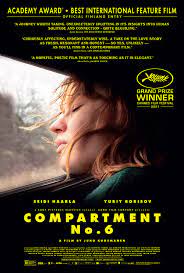
COMPARTMENT NO. 6
England, Russia, 2021, 107 minutes, Colour.
Seide Haarla, Yuriy Borisov, Dinara Drukarova, Tomi Alatalo.
Directed by Juho Kuosmanen.
Winner of the Grand Prix in Cannes 2021, a Finnish and drama. And the title, of course, does suggest a train journey.
In fact, the journey is from Moscow to the Arctic Russian city of Murmansk, quite a long journey, through St Petersburg, then veering north, with stopovers, including one night in a remote town. Not sure whether this will serve as a tourist incentive for other travellers to take this journey. It is not always comfortable in the amenities let alone in the risk of finding those sharing the compartment uncongenial, often obnoxious.
The title does have an aura which might lead to expect something like murder on the Murmansk Express. But, no, it is not that kind of film. Rather, it is a very personal journey by a young woman, student in Moscow, Laura, from Finland. And she has become involved with Irina, a university lecturer, who persuades her to travel north to see the 10,000-year-old petroglyphs. At the last moment, Irina her does not go on the journey, leaving Laura somewhat bewildered, venturing out on her own.
The first thing that happens in compartment number 6 is Laura’s discovery of her fellow passenger, Ljoha, a bald young man, drunk and drinking, verbally abusive. The stern matronly-like figure of the train conductor cannot be bribed to change Laura’s compartment. There is refuge in the corridor. There is refuge in the dining car but it has to close. Where can this be going?
In the morning, the young man is awake, engaging in conversation which is rather blunt, no idea about the petroglyphs and dismissing them. Can the whole journey go on like this?
It doesn’t. Laura begins to come out of herself, disappointing phone calls to Irina, more conversation with the young man, even being persuaded during the night stopover to visit an old lady, his friend, a wise old woman who gives her good advice. A family sits in the compartment at one stage but then get off the train. Then a musician comes in, friendly, but leading to something which causes Laura complete dismay.
The mystery is whether they will ever get to see the petroglyphs because it is winter, the roads impassable, no one willing to serve as a guide.
Perhaps the best thing is to say that we realise that Laura is in search of herself – and in his own way, in fact, is the young man – and whether she will find herself in the quest.
- The title, a train, a road movie, a railroad movie?
- The initial Moscow settings, the city, apartments, parties? The railroad settings, the train, the compartment, corridors, dining car? The stops, the towns, St Petersburg Station, the countryside, winter, the overnight trip to the house, the city of Murmansk, the hotel, the streets, the industrial sites, the snowy countryside, roads, by sea, the destination? The musical score?
- Laura’s story, student in Moscow, background from Finland, the encounter with Irina, the relationship, the party, intellectual background and questions in reading? Intimacy? The trip, her destination, the petroglyphs, archaeology, 10,000 years old? Her personality?
- The trip, the compartment, finding the young man, his drunken behaviour, aggressive, asking whether she was a prostitute? His mess? Her repulsion, her bunk, going to the corridor, unable to change compartments, going to the dining car, the return, his sleeping? Her coping?
- The young man sober, their discussions, his looking for work, not understanding her archaeological quest, not interested? The family occupying the compartment?
- The overnight stop, his invitation, her refusal, the car, getting in, the drive, the old lady and the conversation, inviting Laura to find her inner self, the drinking, the bond with the young man? Waking, the drive, back to the train?
- The change in attitude in each of them, but still themselves? The arrival of the guitar player, playing, the walk during the short stop, the young man slipping in the snow, becoming surly? The guitarist getting out, stealing Laura’s camera? Her being devastated, the filming, memories of Irina, consoling herself on the bunk watching the film?
- The arrival at Murmansk, the time in the dining car, sandwiches, the discussion, his walking out? Disappearing at the station? Laura going to the hotel, the impossibility of going on her expedition, the winter snow?
- Her ringing Irina, Irina and her offhanded responses? Laura initially thinking of going back to Moscow? Continuing?
- The young men at the hotel, offering to guide her, the taxi driver, driving through the snow, the outposts, the discussions, the possibility of going by sea, the deal, the boat, landing, the track, the achievement of the mission (with the audience not seeing the drawings)? The playfulness between the two, the affection, the impact of the long embrace?
- Is returning to work, the change in him, Laura back to the hotel, the change in her?
Bombardment, The

THE BOMBARDMENT
Denmark, 2021, 107 minutes, Colour.
Alex Hogan Andersen, Fanny Bornedal, Bertram Bisgaard Enevoldsen, Susse Wold, James Tarpey, Ella Josephine Lund Nilsson, Ester Birch.
Directed by Ole Bornedal.
A very moving World War II film.
Each year, surprisingly in many ways since it is 80 years plus and minus since the harrowing events of World War II, that there are so many films dramatising aspects of that war. Lest we forget.
The bombardment is based on a true story, set in Denmark, the city of Copenhagen, March 1945, almost at the end of the war. We are introduced to 5 strands in the story which eventually come together. The tone is vividly set in the opening, three young women happily getting dressed, off to a marriage ceremony, a benign old taxi driver, jollity – and then a plane swooping out of the sky and strafing the car killing them all. And the witness is a young boy, Henry, riding his bike, delivering cartons of eggs. He is overwhelmed by what he sees, traumatised, from then on unable to speak.
The strafing is by the RAF, revealed to be mistaken identity, the consequences weighing heavily on the pilots
We are also introduced to a young man, condemned by his father, discovering that he is working for the occupying Germans. Then one of his friends is confronted in the street, is a resistance member, he is shot, and witnessed by mothers and little girls. It emerges that little girls go to a French school in Copenhagen, that Henry is a cousin of one of them and he goes to the school, managed by a community of sisters. The focus is on one of the sisters, Teresa, penitential, flogging herself, questioning God’s presence and absence, criticised by the superior community, yet devoted to the girls. She has also encountered the German collaborator and told him that he is the devil. But, there is a strange attraction between them.
The plot is ready for the central action. The Germans are occupying a large building in central Copenhagen, the Shell House, and the resistance are requesting the RAF to bomb it, even if some of their members are in cells immediately under the roof. We see the preparations, the planning by the RAF, three squads, setting out for the bombing, the first reaching its target.
However, the drama of the bombardment is the mistaking by two of the squads for the French school as Shell House. From then on, the drama is vivid, highly dramatic, tragic, the bombs and fires, the nuns and children killed and injured, hurrying to the basement, trapped, the attempted rescue… With such suffering of the innocent children, the film is very hard to watch. As is the aftermath, the anxious parents, the nun and one of the little girls beneath the building, water rising, and Henry, dismayed, but finding a task of identifying girls being taken to hospital, writing notes, taking them to the theatre for an actress to read out the details to anguishing parents.
This is not a spoiler, but the ending, narrowly focused, is not what we were quite expecting at all, but gives us a moment of relief before the final credits come up and there is a listing of all those who are killed, especially the names of the children.
Yes, it is difficult to watch, but The Bombardment is recommended.
- A true story? Harrowing story? The list of those who died listed during the final credits, the number of children?
- Audience familiarity with stories of World War II, German occupation and consequences? Denmark’s experience of the war? Copenhagen, the Gestapo headquarters? The resistance, arrests, torture? The resistance asking for the bombing of the headquarters, Shell House?
- 1945, towards the end of the war, Germans defeats? The morale of the Danish people? The presence of the Germans, the SS?
- The tone of the opening, Henry, young, whistling, the bike, the eggs, the audience seeing the young women getting dressed, preparing for the wedding, the family joy, the taxi driver, exuberance, the sudden plane, the strafing and deaths? The impact on Henry, shock, trauma, not able to speak, fearful of the sky? Is mother taking him to the doctor, the shock tactics, no effect, his mother taking him to her cousins?
- The introduction of the young girls, singing in the car, the German song? In the street, singing? The confrontation with the young man, his being shot? The mother shielding her daughter’s eyes?
- Frede, at home, his father’s condemnation, his leaving, the revelation that he was part of the German force, and his presence at the torture? Svend asking his help, his refusal, Svend and the confrontation street, shot?
- The introduction of the religious theme, Teresa, in herself, flogging herself, her motivations, wanting God to intervene? The comments of the superior? The introduction to the community, their wariness about sister to reason? The management of the school, a French school, the range of girls, the numbers, the classes, the story of Elizabeth of Hungary, the story of her miracle, the play and the rehearsals, the bread turn to roses?
- The little girls, the discussions with Teresa in class, God and time, God dropping the pencil and taking time to pick it up? The religious themes, the presence of God? Absence of God?
- Frede and his encounter withTeresa, her whispering to him that he was the devil, the later encounter, coming to the gate, the kiss and Teresa expecting God to intervene? Taking him into the church, the crucifixion, the blood from the crucifix, her piecing her finger? The effect on Frede? Kissing him at the gate, the Superior seeing this, the later threat, that she be expelled? Sister Teresa as a realistic character, as a symbolic character?
- Henry, being welcomed by the cousins, accompanying Rigmor, the other girls, going to school, talking about seeing deaths? Going to buy the Bahn, the large woman the shop, their fear, the bun poisoned, going into the church, dipping it into the holy water, safe to eat, their satisfaction that got rid of the poison?
- The presentation of the RAF, the two pilots, friendship, the news that they had destroyed the innocent wedding guests, the effect? The RAF officers, the plan to bomb Shell House, the request of the Resistance, despite Resistance prisoners being held in cells under the roof? The preparation, the plan, the three squads, flying, the danger of pigeons, of hitting power lines? The bombs in Shell House, the effect on the prisoners, one being killed, the others escaping? The torturer and his fleeing?
- The other squads, the wrong target, the school, the bombardments? The destruction?
- The children, the nuns, going down the stairs, trying to escape, the injuries, getting to the basement? Henry outside, finally speaking, the fireman advising to take notes and take them to the theatre where the parents were waiting, the actress reading out the information? Henry reunited with Rigmor’s mother?
- The episode with Eva, at home, refusing to eat the porridge, her father upset? At school, the rehearsal, the sisters urging her to eat something? Her leaving the school and going home?
- Teresa, trapped, Rigmor, the rising water, Teresa tapping, Frede and his seeing the attack, after deserting the police, returning, working with the father, entering the building, to rescue Teresa, the encounter, and then the collapse of the building?
- The parents in the theatre, the mother going outside, talking with Henry, the long tracking shot of her running home and finding Eva eating the porridge?
- The dramatic impact? The emotional impact for the audience?
Jesus who loves with a human heart Nearest to the Father’s heart and makes him known.
Jesus who loves with a human heart
- Nearest to the Father’s heart and makes him known.

What if we said that the feast of the Sacred Heart is the feast of Jesus who loves with a human heart, a feeling Jesus?
It was intended to put this post on the site at the time of the Feast – but so many photos of Sacred Heart Day, Sydney. Melbourne, Vietnam arrived.
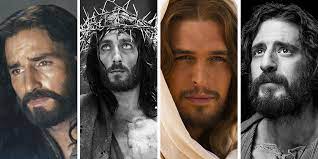
St Ignatius Loyola recommended that, as we contemplate a Gospel story, we enter into it, become part of the story, immersed in the experience, close to Jesus, looking at him, listening to him.
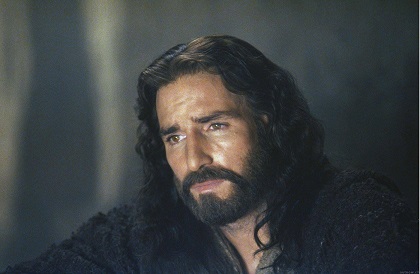
Art enables us to be there. The Jesus films invite us to be there, to look at Jesus there, listening to him. That is what we did at our Blackburn celebration. We were with Jesus and Mary at Nazareth (from The Passion of the Christ). We listened to Jesus tell the story of the parable of the Prodigal Son, Robert Powell as Jesus of Nazareth, and, at the end, Peter the Fisherman, the older brother, with Matthew the tax-collector, the younger brother, reconciled.

Many Jesus clips can be easily downloaded from YouTube. There are DVD copies. Some on streaming. Put them on your USB stick, connect the stick to the computer and the sound and projection system and there you are.

Some suggestions
Gospel According to Matthew
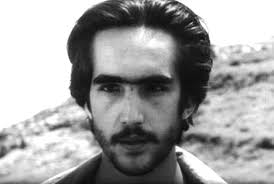
Jesus Christ Superstar
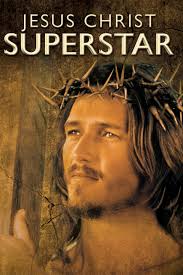
Jesus 1979
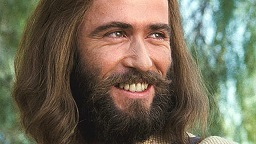
Jesus of Montreal
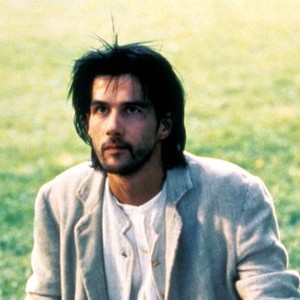
Jesus 1999

Gospel of John 2003
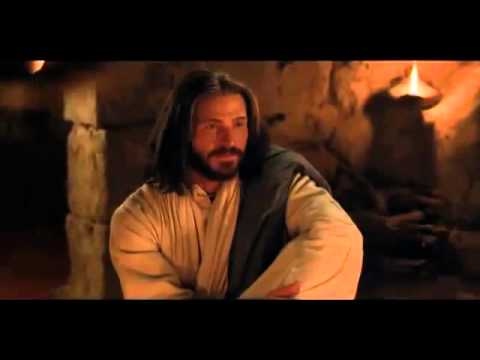
We can see and hear Jesus loving with a human heart – and making the heart of God known.


